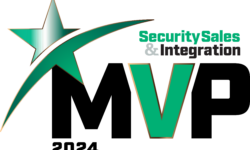Automate Your Business Processes to Make Every Penny Count
Accounting for every billable hour can dramatically impact your cash flow.

ConnectWise's "The Ultimate Guide to As a Service" is a good resource for companies looking to transition to a managed services model.
Have you ever filled a jar with spare change and, after a while, cashed it in? It’s amazing the amount of money that can accumulate from just a few nickels, dimes and quarters here and there. Insignificant amounts at the time, but after accruing they can fill a Christmas fund or pay for a flight for your next vacation.
Keep that in mind.
Business software provider ConnectWise, which specifically targets companies that sell, service and support technology, has an excellent resource that every integrator struggling with diminishing margins ought to read, “The Ultimate Guide to As a Service.” The first five chapters explain how to add “as a service” offerings to your business model in order to increase revenue. Chapter six lays out how to automate business processes to maximize on these new offerings.
First there is Remote Monitoring & Management (RMM) software, which allows an integrator to remotely access, update and provide routine device maintenance for clients. You’re instantly able to identify and resolve problems from the comfort of anywhere, enabling you to monitor all client sites more efficiently, by installing agents on customers’ devices.
Then there are Professional Services Automation (PSA) platforms, which organize your business around one system to centralize information related to service delivery, sales, projects, billing and more. With every service issue, team members can track time, service details and communications in one place at the time of service. It leads to more accurate record-keeping, immediate capture of billable time and early notification when your company has reached included service hours per billing cycle.
THE ULTIMATE GUIDE TO AS-A-SERVICE
Tips, advice, and long-term solutions on how to transition your business to an as-a-service model, and why it’s beneficial to do so.
Part 1: Why Change Your Business Model? – analysis by CI editor Tom LeBlanc
Part 2: How to Plan for the Big Transition – analysis by CI editor-at-large Craig MacCormack
Part 3: Managing Cash Flow – analysis by CI web editor Chelsea Cafiero
Part 4: Adapting Your Sales Strategy – analysis by CI senior web editor Jessica Camerato
Part 5: Transitioning Your Existing Clients – analysis by CE Pro editor Jason Knott
Part 6: Business Process Automation – analysis by TechDecisions managing editor Jonathan Blackwood
Part 7: How to Retain Clients – analysis by CI editor Tom LeBlanc
Check back for analysis of each section of the Ultimate Guide to As-a-Service to be released on SecuritySales.com.
Taken together, these systems can allow a team member to service and correct a problem without traveling to the destination (saving cost), and begin immediately billing customers when they are required to do so (maximizing profit). Rather than eyeballing, guesstimating and rounding down the number of hours a customer should be billed for, a PSA can bill to the very minute, while the RMM facilitates the resolution of issues in a timely manner without hiring new employees.
But what about the cost?
That’s always the concern, and it’s a legitimate one. These platforms can be expensive, especially if you want the best platform that will maximize your efforts. But consider the change jar.
The PSA is your jar, and it’s pretty expensive for something that is just collecting change. But here’s the thing: This jar collects change at the moment of acquisition. As soon as the barista at Starbucks hands you 75 cents, it vanishes from your hand and gets deposited in the jar. Every time you throw spare change in the cup holder of your car, it lands in the jar instead. Every penny that slips between the couch cushions ends up in the jar.
More than that, it does the same for your spouse. It takes the quarter your son gets back after buying school lunch and puts it in the jar. When you give your daughter $20 to go to the movies, the change after buying the ticket and some popcorn ends up in the jar. All of the change your household produces automatically gets inserted into the jar with no extra effort. How much more money would that accumulate than the initial cost of the jar?
That’s a PSA. It begins charging for billable hours immediately, which means you’re getting paid for the 13 minutes between 8:47 and 9:00 that your team member worked but didn’t bill for because writing 9:00 on the slip was just easier. Same for the 15 minutes that team member stayed late.
And that RMM? It will let you know to tell the customer upfront that they’ve exceeded allotted hours and will begin to be billed starting at 3:50, and the PSA will make sure you’re billing for every minute from 3:50 until the job is done at 5:00. Furthermore, the RMM makes it possible for one employee to fix three problems in three different counties in one day, because it’s all remote. That money starts adding up real quick.
When you add up all of that change, you’ll find that the profit will outweigh the cost of the system before long. From there on out it’s straight cash. You just have to decide how to spend it.
If you enjoyed this article and want to receive more valuable industry content like this, click here to sign up for our FREE digital newsletters!

Security Is Our Business, Too
For professionals who recommend, buy and install all types of electronic security equipment, a free subscription to Commercial Integrator + Security Sales & Integration is like having a consultant on call. You’ll find an ideal balance of technology and business coverage, with installation tips and techniques for products and updates on how to add to your bottom line.
A FREE subscription to the top resource for security and integration industry will prove to be invaluable.







